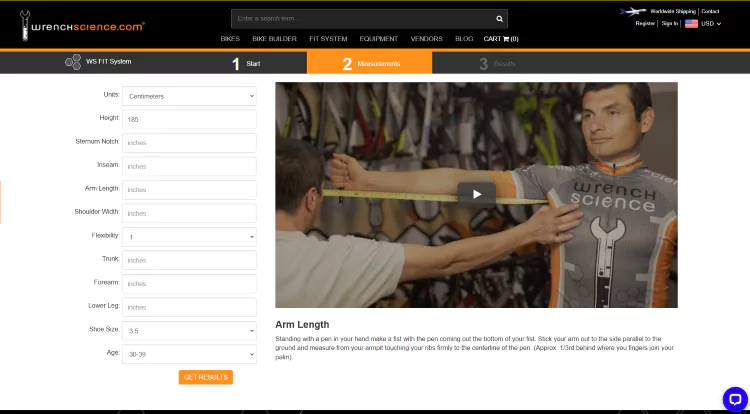Cycling is not only a sport but also a pursuit of comfort, efficiency, and a seamless connection between the rider and their bike. Achieving the optimal riding position is paramount, and this is where bike fitting calculators come into play. These innovative tools have revolutionized the way cyclists approach their setups, providing a data-driven approach to finding the perfect fit. Let’s explore the significance and benefits of bike fitting calculators in enhancing the overall cycling experience.
The Art and Science of Bike Fitting
Bike fitting is a blend of biomechanics, anatomy, and cycling dynamics. A well-fitted bike not only maximizes power output but also minimizes the risk of injuries and discomfort during long rides. Traditionally, bike fitting was often a subjective process, relying on the expertise of experienced fitters. However, the advent of bike fitting calculators has introduced a more systematic and personalized approach.
Understanding Bike Fitting Calculators

A bike fitting calculator is a tool that uses a set of algorithms and measurements to determine the optimal dimensions for a cyclist’s bike setup. It takes into account factors such as inseam length, torso length, arm length, and flexibility to generate a set of recommendations for saddle height, handlebar reach, and other critical adjustments. The goal is to find the ideal balance between aerodynamics, power transfer, and rider comfort.
Key Parameters Considered by Bike Fitting Calculators
- Inseam Length: This is the measurement from the ground to the crotch and is crucial in determining the correct saddle height.
- Torso Length: The length of the torso influences the reach to the handlebars, and finding the right balance ensures a comfortable riding position.
- Arm Length: Arm length affects the handlebar reach, and proper adjustment is essential for optimal control and comfort.
- Flexibility: Rider flexibility plays a role in determining the ideal saddle-to-handlebar drop and overall riding position.
Benefits of Using Bike Fitting Calculators
- Precision Fit: Bike fitting calculators provide a level of precision that is challenging to achieve through traditional methods. The algorithms consider multiple variables to generate recommendations tailored to the individual rider.
- Reduced Discomfort and Injuries: A well-fitted bike reduces the likelihood of discomfort, pain, and injuries associated with an improper riding position. This is particularly important for long rides and competitive cycling.
- Improved Performance: The right fit ensures optimal power transfer and aerodynamics, contributing to improved cycling efficiency and performance.
- Accessibility and Convenience: Bike fitting calculators are often available online, making them accessible to cyclists worldwide. This accessibility allows riders to experiment with adjustments and fine-tune their setups.
- Adaptability to Changes: As riders progress or their fitness levels change, bike fitting calculators offer a dynamic solution. Regular reassessment using the calculator enables cyclists to adapt their setups to evolving needs.
How to Use a Bike Fitting Calculator
Using a bike fitting calculator typically involves entering specific measurements, such as inseam length and torso length, into the online tool. The calculator then processes this data and generates recommendations for saddle height, saddle setback, stem length, and other critical parameters. Riders can experiment with these recommendations and make incremental adjustments until they find the most comfortable and efficient setup.
Conclusion
Bike fitting calculators represent a paradigm shift in the way cyclists approach their riding positions. By combining the precision of algorithms with the uniqueness of individual biomechanics, these calculators empower riders to achieve the perfect fit. As technology continues to advance, the integration of artificial intelligence and machine learning may further refine and enhance the capabilities of bike fitting calculators, ushering in a new era of personalized and data-driven cycling experiences.

